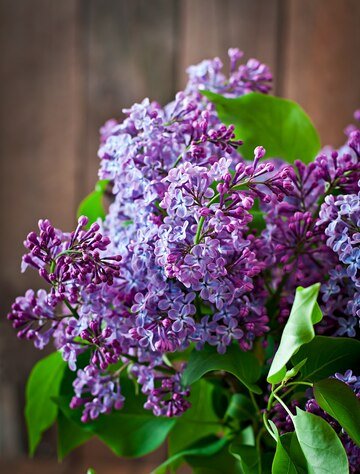Introduction
Lisianthus, scientifically known as Eustoma grandiflorum, is a stunning flower that has captured the hearts of gardeners and florists alike. Often mistaken for roses, lisianthus flowers are known for their delicate, ruffled petals and a wide range of colors, making them a popular choice for bouquets, wedding arrangements, and garden displays. However, these beautiful blooms come with a reputation for being somewhat challenging to grow. In this guide, we’ll explore everything you need to know about cultivating and caring for lisianthus, from planting to maintenance.

What is Lisianthus?
Lisianthus is a herbaceous annual or biennial plant native to the southern United States, Mexico, the Caribbean, and northern South America. It’s particularly loved for its elegant, rose-like blooms that come in shades of white, pink, purple, blue, and even bi-colored varieties. The plant’s upright stems and long-lasting flowers make it a favorite in the floral industry.
Choosing the Right Variety
There are several varieties of lisianthus, each with its unique characteristics. When selecting lisianthus for your garden or home, consider the following:
Single vs. Double Blooms
Lisianthus flowers come in single or double bloom forms. Single blooms have a more open, simple appearance, while double blooms are fuller and more ruffled, resembling roses.
Height Variations
Lisianthus plants can vary in height, with dwarf varieties reaching about 6-8 inches and taller varieties growing up to 24-36 inches. Choose a variety that fits your garden space or container size.
Color Options
With a wide palette of colors available, you can choose lisianthus varieties that match your garden’s theme or your personal preference.
Planting Lisianthus
Successfully growing lisianthus starts with proper planting techniques.
Starting from Seeds
Lisianthus is typically grown from seeds, but it’s important to note that the seeds are very tiny and slow to germinate. Start seeds indoors about 10-12 weeks before the last frost date.
- Sowing Seeds: Sow the seeds on the surface of a sterile, well-draining seed-starting mix. Lightly press the seeds into the soil but do not cover them, as they need light to germinate.
- Germination: Place the seed trays in a bright location with a temperature of 70-75°F (21-24°C). The seeds should germinate in 10-15 days.
- Transplanting: Once the seedlings have developed a few sets of true leaves, they can be transplanted into individual pots.
Transplanting Outdoors
After the danger of frost has passed and the soil has warmed, you can transplant your lisianthus seedlings outdoors.
- Location: Choose a sunny spot in your garden with well-draining soil. Lisianthus prefers full sun but can tolerate light shade.
- Soil Preparation: Amend the soil with compost to improve fertility and drainage. The soil pH should be slightly acidic to neutral (6.0-7.0).
- Spacing: Plant lisianthus seedlings about 6-12 inches apart, depending on the variety, to allow for proper air circulation and growth.
Caring for Lisianthus
Once planted, lisianthus requires specific care to thrive.
Watering
Lisianthus plants need regular watering, especially during dry periods. However, they are sensitive to overwatering, which can lead to root rot.
- Watering Frequency: Water the plants deeply but infrequently, allowing the soil to dry out slightly between waterings. It’s better to water at the base of the plant to keep the foliage dry.
- Avoiding Overwatering: Ensure that the soil has good drainage and that water doesn’t pool around the plants.
Fertilizing
Lisianthus benefits from regular feeding to support its growth and flowering.
- Fertilizer Type: Use a balanced, water-soluble fertilizer every 2-4 weeks during the growing season. A slow-release granular fertilizer can also be applied at planting time.
- Application: Follow the manufacturer’s instructions for application rates, and avoid over-fertilizing, which can lead to excessive foliage growth at the expense of flowers.
Staking and Support
Taller varieties of lisianthus may require staking to prevent the stems from bending or breaking under the weight of the flowers.
- How to Stake: Use bamboo stakes or flower supports, and tie the stems gently with soft garden ties. Place the stakes early in the growing season to avoid damaging the roots later on.
Pest and Disease Management
Lisianthus is relatively pest-resistant, but it can be susceptible to certain issues.
Common Pests
- Aphids: These small insects can be found on the undersides of leaves and flower buds. They can be controlled with insecticidal soap or neem oil.
- Thrips: Thrips can cause damage to the flowers, resulting in discolored and deformed blooms. Sticky traps and insecticidal sprays can help manage thrips
Diseases
- Botrytis Blight: This fungal disease causes gray mold on the flowers and leaves, especially in humid conditions. Improve air circulation around the plants and remove affected parts.
- Root Rot: Caused by overwatering, root rot leads to wilting and yellowing of the plant. Ensure proper drainage and avoid waterlogged soil.
Harvesting Lisianthus
One of the joys of growing lisianthus is harvesting the flowers for arrangements.
When to Harvest
Harvest lisianthus flowers when the buds are just beginning to open for the longest vase life. Use sharp scissors or pruning shears to cut the stems.
Vase Life
Lisianthus has an excellent vase life, often lasting up to two weeks. Remove any foliage that will be below the waterline in the vase and change the water every few days to keep the flowers fresh.
Growing Lisianthus in Containers
Lisianthus can also be grown in containers, making them a versatile option for patios, balconies, or small garden spaces.
Choosing a Container
Select a container with good drainage holes and a size that accommodates the root system. A 10-12 inch pot is generally suitable for most varieties.
Potting Mix
Use a well-draining potting mix, ideally one formulated for flowering plants. Ensure that the container is placed in a sunny location.
Lisianthus in Floral Arrangements
Lisianthus is highly prized in floral arrangements due to its long stems, beautiful blooms, and ability to pair well with other flowers.
Popular Uses
- Wedding Bouquets: Lisianthus is a popular choice for bridal bouquets due to its delicate appearance and wide range of colors.
- Centerpieces: The long-lasting nature of lisianthus makes it ideal for centerpieces and other decorative arrangements.
- Mixed Bouquets: Lisianthus pairs beautifully with roses, hydrangeas, and other garden flowers, adding texture and elegance to any bouquet.
Conclusion
Lisianthus is a stunning and rewarding plant to grow, whether you’re an experienced gardener or a beginner. With the right care, including proper planting, watering, and pest management, your lisianthus plants will thrive and produce beautiful blooms that can be enjoyed both in the garden and in floral arrangements.
FAQs
Can lisianthus be grown indoors?
Yes, lisianthus can be grown indoors if placed in a bright, sunny spot. Ensure that the plant receives plenty of light and is watered properly.
How long does it take for lisianthus to bloom?
Lisianthus typically takes 6-7 months from seed to bloom, so patience is key when growing this plant.
Is lisianthus a perennial or annual?
Lisianthus is often grown as an annual in most climates, but it can be a short-lived perennial in warmer regions.
Can lisianthus tolerate cold temperatures?
Lisianthus is sensitive to frost and should be protected from cold temperatures. If growing outdoors, wait until after the last frost to plant.
How do I propagate lisianthus?
Lisianthus is typically propagated from seeds, as cuttings and divisions are less successful.
You can see lates updates on: Thefsiblog



